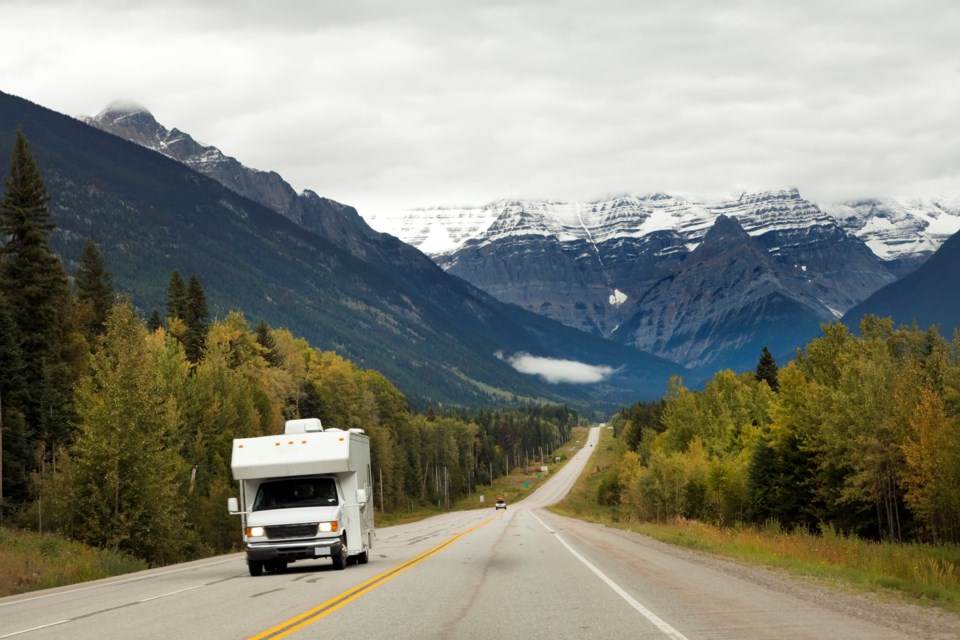As you get ready to hit B.C.’s open roads (and waters) this summer for all your camping, RV, cabin and vacation home, or boating adventures, there’s important information you need to know to prevent harmful carbon monoxide exposure.
Although many British Columbians are aware of the risks of carbon monoxide exposure in their own home, they may not realize how dangerous levels of exposure can happen while participating in these recreational activities over the summer months.
Carbon monoxide is a colourless, odourless, and tasteless gas produced by burning fuels such as: propane, natural gas, oil, wood, charcoal, alcohol, kerosene, or gasoline — all of which are commonly used during cooking, grilling, and travelling when camping and vacationing.
So why is monitoring for carbon monoxide so important? Exposure to carbon monoxide interferes with the body’s ability to absorb oxygen, which can lead to serious illness or death.
“While carbon monoxide usually gives you a headache and can make you nauseated, there are times where it simply makes you pass out,” states Dr. Bruce Campana, Professor and Hyperbaric Physician at Vancouver General Hospital.
Some of the initial symptoms of carbon monoxide exposure include: headaches, confusion, vomiting, weakness, dizziness, and chest pains.
As the gas builds up in the bloodstream, these symptoms can magnify into:
- Increased confusion and drowsiness
- Fast breathing, fast heartbeat, or increased chest pain
- Vision problems
- Seizures
“Carbon monoxide monitors are like wearing a seat belt – most of the time you don’t need them, but when you do you really do,” says Dr. Campana.
In fact, there were three deaths in B.C. last year involving carbon monoxide from DIY-installed propane appliances at remote vacation properties.
In a cabin or vacation home rental, gas-fired appliances, such as furnaces, boilers, hot water tanks, propane refrigerators, stoves, dryers, and fireplaces can produce carbon monoxide.
If you’re camping in a tent, trailer, or RV, appliances like barbecues, lanterns, portable heaters, and stoves can generate carbon monoxide. Another common source is the exhaust from a vehicle engine or a generator.
Gas-powered engines on boats (including onboard generators), are a potential source of carbon monoxide. On larger boats, such as houseboats, it can build-up on or near the swim deck, inside the cabin, or even in open areas onboard.
Carbon Monoxide Alarm. Photo: Getty Images.
Important safety tips on how you can prevent carbon monoxide exposure from ruining your vacation plans can be found below.
When in your RV, vacation home, cabin rental, or on the campground:
- Only use fuel-burning appliances outside when travelling by RV or staying at the campground.
- Pack a portable, battery-operated carbon monoxide alarm or combination smoke/carbon monoxide alarm (and never the sound of the alarm!). When staying at a vacation home or cabin, double check to make sure the rental lists a built-in carbon monoxide alarm in the provided amenities.
While you’re out boating, make sure to:
- Install and maintain a working carbon monoxide alarm inside the boat.
- Properly install and maintain all fuel-burning engines and appliances.
- Never block exhaust outlets.
- Dock, beach, or anchor at least 20 feet away from the nearest boat that is running a generator or engine.
- Avoid swimming near or under the back deck or swim platform.
- Watch children closely when they play on rear swim decks or water platforms.
So what should you do if you suspect carbon monoxide exposure has occurred?
If you believe you or someone you are travelling with is being poisoned by carbon monoxide, or if your alarm goes off, you should immediately:
- Turn your appliances off,
- Get everyone (including pets) outside,
- Call 911 or your local emergency number, and
- Seek medical attention.
Once away from the hazard, don’t return back to the area until you’re sure it’s safe—if you’re not sure, wait for emergency responders to tell you the situation is all clear.
Now that you know all about preventing carbon monoxide exposure while vacationing away from home, you can relax and enjoy your vacation with peace of mind!
For more info, visit cosafety.tips.



